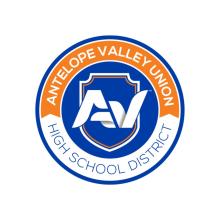
*This piece was authored by Brieana Reed-Harmel, manager of the municipal-owned Pulse fiber network in Loveland, Colorado. It was originally published by Broadband Breakfast with permission to republish here. We have extensively covered the Pulse network in Loveland examples of which can be found here and here.
***
I am the manager for Pulse, the municipally owned broadband utility in Loveland and parts of Larimer County, Colorado. We made strong choices early on that put us on a path to success.
Having broken ground fewer than six months before the start of the pandemic, I am continually impressed with how smoothly our work has progressed. Put simply, I want you to be as successful as we have been.
Define the Plan, Assess Your Skills and Determine What You Need
Documenting the plan makes it easy to share the vision. The plan needs to include the high-level vision and strategy, but also delve into the granular, tactical details as it establishes your success criteria. What does success look like in terms of customer take rate, time to rollout and network documentation?
Include details related to long-term maintenance, and what operations will eventually look like as it will affect the network design, construction methods and the type of materials you decide to use. Understanding these details can greatly change cost models, as some choices have lower upfront costs but higher longer term maintenance costs, and vice versa, which can make or break a business model.
It’s also essential to self-assess and know what skill sets you already have in-house that can be leveraged and what skills you need to acquire. A key component that was built into our plan was having two distinct buckets of staff and vendor partners — one with a focus on operations of a fledgling utility and the other focused on the success of the construction of the capital project.
This foundation allows your team to work the plan, adjust it as needed, and most importantly, have the bandwidth to handle anything out of scope that comes up along the way — and believe me, situations you’re not expecting are going to come up (see: lockdown 2020).
Become an Expert at Managing Experts and Find Your People
It’s simply not possible to be an expert in every skill that you’ll need to execute a project of this magnitude — fiber-design, hut selection, customer experience and billing, supply chain management and myriad others. That said, an intensely curious nature will serve you well. It will be helpful to work on becoming an expert at evaluating experts — how they solve problems, how they approach complications, what is their motivation, how do they stay up to speed in their industries, how effective they will be at applying their expertise in the service of your goal.

Being able to rely upon your team around you as you navigate a dynamic and ever changing project is invaluable. And, most important of all in my opinion, do they bring the right mindset that will add to your organization? Understanding your brand proposition, the community you are serving, and having a customer first and public service mindset is essential to success.
Seek out partners, not just contractors. With Ditesco Services, Colorado Boring and Backbone Fiber we were fortunate to find locally-owned partners for our capital construction project management and primary boring. They genuinely care about the optics of the project in the community because they are part of the community.
With other partnerships, including OnTrac, Inc. and internal hires, we looked for skills and an internal compass pointing toward improving the lives of our residents. Our team members embody the principles of public service and are all proud to have dedicated their careers to the development of a critical community resource.
Solid Systems Setup, Scaling and Quality Assurance

Set up internal systems early on. Define what programs and platforms you’ll use, frequency of check-ins and timelines for response to inquiries. As an example, we put our teams through media and communications training before shovels hit the ground, ensuring everybody knew what to do from something as simple as an inquiring resident on the jobsite to something more serious like a utility hit. Another example was spending time to automate provisioning of network equipment to our OSS/BSS system.
It was time-consuming at first but has allowed us to better use limited staff resources more efficiently and scale effectively as we have grown. Each component of the project and the associated team had clear boundaries.
It bears repeating that effective people, process, and technology systems ensure there is plenty of bandwidth to handle anomalies.
With systems in place, the data pipeline to analyze what is working well and what is not is there to be improved upon from the beginning. You’ll have your own benchmark data, allowing you to iterate and improve against your own metrics, and not just general industry standard estimates. You are able to scale as needed, and it’s easy to keep an eye on quality and discover areas that need improvement.
Nurturing the human elements in a technical project
Managers are often criticized for holding cards close to the chest. They don’t always make it easy for others to see the big picture of what’s going on. That strategy is not going to serve you well. We have received a tremendous amount of positive feedback from all of our partners that they feel very much in the loop. They appreciate the environment we’ve cultivated for external partners to interact with one another.
We have regular in-person-and-digitally-accessible meetings to make sure that the systems are working as intended, and to determine where we need to improve. We make it as easy as possible for everybody to understand what’s working, what isn’t, and what they’re responsible for when we collectively decide to optimize.
To Your Success
We made mistakes along the way and learned many valuable lessons as we went through this process. But we were prepared to deal with issues, because we baked that bandwidth into our plan and systems. Our advice to others is that if you focus on your plan, systems, the vision and well-being of the people in your organization, you’ll find yourself walking a similar path to outstanding community connectivity.
Brieana Reed-Harmel is the Manager for Pulse, the community-owned fiber-optic broadband network in Loveland, Colorado. Brieana brings over 20 years of utility experience in engineering and leadership roles, spanning both the public and private sectors. She was officially named Municipal Fiber Manager in December 2018 after leading the city through the assessment and feasibility study of publicly owned broadband.







